10 Best Commercial Low Fat Dog Foods (Canned & Dry) for Pancreatitis
Quick Guide
- What is the Best Commercial Low Fat Dog Food for Pancreatitis?
- Why Do Some Dogs Need a Low-Fat Diet?
- Tips for Reducing Your Dog’s Fat and Calorie Intake
- What to Look for in a Low-Fat Dog Food
- The 10 Best Low-Fat Dog Foods
- Canidae PURE Healthy Weight Chicken & Pea Recipe Dry Food
- Blue Buffalo Life Protection Formula Healthy Weight Dry Food
- American Journey Healthy Weight Chicken & Brown Rice Recipe
- Now Fresh Grain-Free Senior Weight Management Recipe
- Solid Gold Fit & Fabulous Low Fat/Low Calorie Recipe with Alaskan Pollock Dry Food
- 5 More Top-Rated Low-Fat Dog Foods
- Wellness CORE Natural Grain-Free Reduced Fat Dry Dog Food
- Nature’s Variety Instinct Raw Boost Healthy Weight Grain-Free Chicken Recipe Dry Food
- Annamaet Grain-Free Lean Dry Dog Food Formula
- Natural Balance Fat Dogs Chicken & Salmon Formula Low Calorie Dry Food
- Earthborn Holistic Weight Control Grain-Free Dry Dog Food
- Frequently Asked Questions
As humans, we’ve been trained to think of fat as the enemy. The truth of the matter is, however, that dietary fat is just another nutrient and a source of calories the body can use as energy. This is particularly true for dogs – fat is an important nutrient because it is the most concentrated source of energy available, having 9 calories per gram versus just 4 for protein and carbohydrate.
Though dogs have a nutritional requirement for fat in their diet, some dogs need to limit their fat intake. If your dog is overweight or obese, reducing the fat content of his diet may help you control his calorie intake. For other dogs, a low-fat diet may be a medical necessity – this is true for dogs with pancreatitis or irritable bowel syndrome (IBS).
Understanding your dog’s nutritional needs is absolutely essential, especially if his needs are a little different from most dogs. In this article, we’ll explore the subject of low-fat diets for dogs to help you learn why some dogs might need a low-fat diet. We’ll also talk about how to reduce your dog’s calorie intake and what to look for in a low-fat dog food .
What is the Best Commercial Low Fat Dog Food for Pancreatitis?
- Canidae PURE Healthy Weight Chicken & Pea Recipe Dry Food – High Protein
- Blue Buffalo Life Protection Formula Healthy Weight Dry Food
- American Journey Healthy Weight Chicken & Brown Rice Recipe – Most Affordable
- Now Fresh Grain-Free Senior Weight Management Recipe
- Solid Gold Fit & Fabulous Low Fat/Low Calorie Recipe – Lowest Fat
- Wellness CORE Natural Grain-Free Reduced Fat Dry Dog Food
- Nature’s Variety Instinct Raw Boost Healthy Weight Grain-Free
- Annamaet Grain-Free Lean Dry Dog Food Formula
- Natural Balance Fat Dogs Chicken & Salmon Formula Low Calorie Dry Food
- Earthborn Holistic Weight Control Grain-Free Dry Dog Food
Why Do Some Dogs Need a Low-Fat Diet?
You’ve probably heard that high-fat diets lead to heart problems such as clogged arteries in humans. While this is a common belief, it is not true – at least, not completely. This doesn’t take into account the fact that there are different kinds of dietary fats, some of which are good for the heart and some of which are not. When it comes to dogs, there is no evidence that high-fat diets are linked to heart disease. In fact, dogs and cats simply aren’t affected by the same kind of heart disease that clogs the arteries, so there is no need to restrict your dog’s fat intake based on concerns for his heart health.
There are, however, other medical conditions that may necessitate a low-fat diet.
Pancreatitis in dogs is the most common health problem which a low-fat diet is recommended. This is not to say that a high-fat diet will cause pancreatitis in dogs, it simply means that dogs who have pancreatitis often respond well to low-fat diets because it puts less stress on the pancreas and gives the dog’s body time to recover. Exocrine pancreatic insufficiency (EPI) is related health issue that may necessitate a low-fat diet.
Another problem that may benefit from a low-fat dog food is inflammatory bowel disease or IBD. This condition is a common cause of chronic vomiting and diarrhea in dogs and it is characterized by inflammation in the gastrointestinal tract. IBD is often idiopathic but can be linked to bacterial, viral, or parasitic infections as well as food allergies and sensitivities. Some dogs respond well to reduced-fat diets if they have trouble digesting dietary fats and, in some cases, low fat low fiber dog food is ideal.
Tips for Reducing Your Dog’s Fat and Calorie Intake
Before you make any significant changes to your dog’s diet, you should consult your veterinarian. Just because your dog is a little bit overweight doesn’t necessarily mean he needs a low-fat diet. Dietary fat is a nutritional necessity for dogs and if you decrease his intake unnecessarily, it could lead to other health problems. Your veterinarian will be able to tell you whether your dog needs a low-fat diet to lose weight or he will be able to diagnose problems like digestive issues or pancreatitis which may necessitate a switch to a low-fat dog food.
If your veterinarian determines that your dog doesn’t suffer from pancreatitis or a digestive disorder, but he could stand to lose a little weight, there are some simple things you can do to reduce his fat and calorie intake without completely overhauling his diet.
Here are some ways to reduce your dog’s fat and/or calorie intake:
- Calculate your dog’s daily calorie intake using his ideal body weight (ask your vet) and adjust his feeding according to the calorie content of his existing food.
- Try feeding your dog the recommended amount for his ideal weight rather than his current weight (as long as it isn’t too much of a reduction).
- Feed your dog structured meals at specific times rather than free-feeding him.
- Encourage your dog to get exercise throughout the day by taking him for several short walks and engaging him in active playtime.
- Reduce the number of treats and table scraps you give your dog – they should be accounted for in his daily calorie intake and account for no more than 10% to 15% of the total.
- Switch to a weight management formula or look for a dog food with a lower fat and calorie content than your dog’s current food.
What to Look for in a Low-Fat Dog Food
Most commercial dog foods get anywhere from 25% to 60% of their calories from fat. Dry foods tend to be a little lower in fat than wet foods while commercial raw food diets are often at the highest end of the spectrum. When reading a pet food label, you can easily find the percentage of crude fat in the product but remember that you’ll need to convert that number to dry matter basis if it is a wet, moist, or fresh food. You should also remember that this calculation is made based on weight, not the percentage of calories.
If you take a look at a pet food label, you’ll find that a product with 20% crude fat minimum converts to more than 40% calories from fat – that is much too high for a dog with pancreatitis or certain digestive issues. Generally speaking, veterinarians consider a dog food to be low-fat if it contains less than 10% fat measured by dry matter basis which equates to about 17% calories from fat. This may not be perfect in every case, but it is certainly a good rule to follow when shopping for low-fat dog food.
Here are some other things to look for in low-fat dog food:
- Nutritionally complete and balanced. Simply reducing your dog’s fat intake will also reduce his intake of fat-soluble vitamins and essential fatty acids, so make sure your dog’s food is nutritionally complete and balanced to avoid causing further issues.
- Premium animal protein. All dogs require a diet with adequate protein, so make sure a digestible source of animal protein is the first ingredient in your dog’s new diet.
- Digestible ingredients. The digestibility of your dog’s diet is almost more important than the fat content if he has pancreatitis. Low-carbohydrate dog foods tend to be most digestible for dogs, but whole foods are always better than by-products, so even a diet that contains whole grains could be digestible for some dogs.
- Low to moderate fiber. Fiber is important to support your dog’s digestion, but dogs suffering from pancreatitis may do better on a low-fat low fiber dog food. Ask your vet whether your dog can benefit from reduced fiber intake in addition to his low-fat diet.
- No artificial additives. The digestibility of your dog’s diet is essential anyway, but particularly for dogs with pancreatitis and digestive issues. Artificial additives like chemical dyes, flavors, and preservatives can irritate your dog’s digestion and make matters worse.
Before we move on, we want to make a special note to say that it is not safe to feed a low-fat diet to growing puppies or to pregnant and nursing female dogs. These dogs have greater nutritional needs than most dogs and a low-fat diet could be very harmful. Low-fat diets are only recommended for adult dogs in specific situations such as pancreatitis, digestive disorders, or weight loss.
Now that you have a better idea of why your dog might need a low-fat diet and what to look for in low-fat dog food, you’re ready to move to the next step. Talk to your veterinarian (if you haven’t already) to make sure your dog actually needs a low-fat diet then put what you’ve learned here to work in finding one. If you’re still not sure where to start, check out our top picks for the best low-fat dog food below.
The 10 Best Low-Fat Dog Foods
When choosing a low-fat dog food, you still need to remember your dog’s basic nutritional requirements. Protein is the foundation of a healthy diet for any dog, so look for a recipe that lists a premium source of animal protein as the first ingredient. Look for other high-quality, natural ingredients like digestible carbohydrates and fresh fruits and veggies with limited fat content – remember, 10% is considered low-fat by veterinarians.
Here’s our top pick for the best low-fat dog food:
Canidae PURE Healthy Weight Chicken & Pea Recipe Dry Food
Overall Best High Protein Low-Fat Dog Food: When it comes to high-quality nutrition, the Canidae brand is one you can trust. This Canidae PURE Healthy Weight Chicken & Pea Recipe Dry Food is a great option if you’re looking for a low-fat dog food for weight loss because it contains just 9% fat but is loaded with 28% protein. It is still moderate in terms of fiber at 5% and contains just 9 main ingredients, making it an excellent choice if you’re looking for a low fat dog food for sensitive stomachs. It features fresh chicken as the first ingredient with supplemental protein from chicken meal and turkey meal. It is grain-free, featuring sweet potatoes and peas as digestible grain-free carbohydrates with plenty of vitamin and chelated mineral supplements to ensure complete and balanced nutrition. Overall, it’s a great pick for any dog.
- Pros: High in protein low in fat, moderate fiber content, grain-free carbohydrates, real chicken as first ingredient, limited number of ingredients, chelated minerals, probiotics
- Cons: Expensive to feed as a staple diet
Blue Buffalo Life Protection Formula Healthy Weight Dry Food
Most Popular Low-Fat Dog Food: If you’re not sure what to feed your dog, but you’re looking for a low-fat dog food, you can’t go wrong with a popular choice like Blue Buffalo Life Protection Formula Health Weight Dry Food. This formula features premium animal protein from fresh chicken with concentrated protein from chicken meal, not to mention plenty of glucosamine and chondroitin for healthy bones and joints. You’ll find digestible whole-grain carbohydrates like brown rice and oatmeal with fresh fruits and vegetables to provide natural sources for key nutrients as well as supplemental fiber. This recipe is balanced in terms of omega-3 and omega-6 fatty acids but still only contains 9% fat in total. It is nutritionally complete and balanced but free from artificial additives, so you know your dog is only getting the high-quality nutrition he deserves and needs to remain healthy.
- Pros: Real chicken as main ingredient, low in fat (9%), digestible whole-grain carbohydrates, fresh fruits and vegetables, joint-supporting nutrients, chelated minerals, probiotics
- Cons: May be too high in fiber for some dogs, could be higher in protein
American Journey Healthy Weight Chicken & Brown Rice Recipe
Most Affordable Low-Fat Dog Food: For an affordable but still high-quality option in low-fat dog food, consider this American Journey Healthy Weight Chicken & Brown Rice Recipe dry food. This recipe features fresh chicken as the first ingredient with chicken meal as a supplemental source of protein and a natural source of glucosamine and chondroitin. It contains digestible whole-grain carbohydrates like brown rice and barley with peas for supplemental fiber. This formula is rich in protein with 25% and has only 9% fat. It contains just over 300 calories per cup and is supplemented with fresh fruits and vegetables to provide natural sources for key nutrients. You’ll also be glad to know that it contains chelated minerals to ensure optimal nutrient absorption with vitamins for nutritional balance.
- Pros: Affordable price, real chicken as first ingredient, low in fat (9%), fresh fruits and vegetables, digestible whole-grain carbohydrates, chelated minerals, nutritionally balanced
- Cons: May be too high in fiber for some dogs, not a grain-free recipe (some dogs may be sensitive)
Now Fresh Grain-Free Senior Weight Management Recipe
Best Low-Fat Dog Food for Senior Dogs: As your dog gets older, his metabolism will slow down, and he’ll be even more prone to weight gain. Finding a healthy diet that will support his nutrition in old age is essential, but you also need to be mindful of digestive issues and pancreatitis. This Now Fresh Grain-Free Senior Weight Management Recipe is an excellent choice because it contains only 10% fat and features fresh turkey as the main ingredient. It is supplemented with additional proteins like fresh salmon and duck and has plenty of fresh fruits and vegetables to provide natural sources of key nutrients. It also contains supplements valuable for aging dogs like probiotics, glucosamine, and chondroitin.
- Pros: Formulated for senior dogs, low in fat (10%), several premium animal proteins, fresh fruits and veggies, glucosamine and chondroitin supplements, chelated minerals
- Cons: Expensive to feed as a staple diet, not a single-source protein recipe
Solid Gold Fit & Fabulous Low Fat/Low Calorie Recipe with Alaskan Pollock Dry Food
Best Low-Fat Dog Food for Sensitive Stomachs: Reducing the fat and calorie content of your dog’s diet shouldn’t mean reducing the nutritional value. This Solid Gold Fit & Fabulous Low Fat/Low Calorie Recipe with Alaskan Pollock is a great low-fat dog food for sensitive stomachs because it is it is a holistic natural formula made with premium-quality ingredients and is complete and balanced in terms of nutrition. It features fresh-caught Alaskan pollock as the first ingredient with supplemental protein from pollock meal, turkey meal, and dried eggs. It is rich in omega fatty acids and supplemented with fresh fruits and veggies to provide natural sources for essential nutrients. This formula contains just 6.5% fat with 26% protein, so it will help your dog maintain lean muscle mass without triggering issues related to pancreatitis or difficulty digesting fats.
- Pros: Very low in fat (6.5%), fresh pollock as first ingredient, digestible carbohydrates, fresh fruits and vegetables, rich in omega fatty acids, chelated minerals, probiotic supplements
- Cons: May be too high in fiber for some dogs, not a grain-free recipe (some dogs may be sensitive)
5 More Top-Rated Low-Fat Dog Foods
If the recipes we’ve reviewed above don’t seem like the right fit, don’t worry – there are plenty of other options out there. Here are five more top-rated low-fat dog foods:
Wellness CORE Natural Grain-Free Reduced Fat Dry Dog Food
If you’re looking for a low-fat dog food that is still nutritionally balanced and full of flavor, this is definitely an option you should consider. This Wellness CORE Natural Grain-Free Reduced Fat Dry Dog Food features a combination of lean proteins like chicken and turkey in a nutrient-rich but low-fat formula. It contains fresh, deboned turkey as the main ingredient and gets supplemental protein from turkey meal and chicken meal. This is a grain-free dog food recipe made with digestible carbohydrates like potatoes and peas, supplemented with probiotics for healthy digestion. It also contains chelated minerals to ensure optimal nutrient absorption with fresh fruits and vegetables to provide natural sources for key nutrients.
- Pros: Fresh turkey as main ingredients, provides 33% protein, low in fat and calories, digestible grain-free carbohydrates, rich in omega fatty acids, fresh fruits and vegetables, chelated minerals, probiotics
- Cons: May be too high in fiber for some dogs, some dogs may be sensitive to chicken ingredients
Nature’s Variety Instinct Raw Boost Healthy Weight Grain-Free Chicken Recipe Dry Food
For a recipe that is packed with protein and is still lower in fat than traditional kibble, consider this Nature’s Variety Instinct Raw Boost Healthy Weight Grain-Free Chicken Recipe Dry Food. This formula takes the form of a protein-rich kibble infused with freeze-dried raw bites to provide a boost of flavor and nutrition. It is still a healthy weight formula, made with 15% fewer calories and 25% less fat than the original recipe, but it will also provide your dog with a nutritious source of energy. This dry food recipe lists fresh chicken as the primary ingredient and gets supplemental protein from concentrated sources like turkey meal, chicken meal, and menhaden fish meal. This recipe contains a balance of omega-3 and omega-6 fatty acids with probiotics to support healthy and regular digestion.
- Pros: High-protein kibble with freeze-dried raw bites, lower in calories and fat, rich in fiber, digestible grain-free carbohydrates, blend of omega fatty acids, chelated minerals probiotics
- Cons: Expensive to feed as a staple diet, some dogs may be sensitive to chicken ingredients
Annamaet Grain-Free Lean Dry Dog Food Formula
No one ever said that low-fat dog food had to be boring or tasteless and this Annamaet Grain-Free Lean Dry Dog Food Formula is proof that even low-fat dog food can still taste great. It is a lean dry food formula designed to help your dog lose weight without sacrificing the meaty flavor he wants. This recipe features chicken meal as a concentrated source of lean protein with the addition of digestible grain-free carbohydrates like lentils, potatoes, and peas for carbohydrate energy and fiber. You’ll find supplemental sources of protein like duck meal and herring meal with plenty of healthy fats from animal sources. This recipe contains chelated minerals to ensure optimal nutrient absorption as well as probiotics for healthy digestion. Overall, it contains 30% protein with 9% fat and 350 calories per cup.
- Pros: Chicken meal is the main ingredient, digestible grain-free carbohydrates, high in protein, low in calories and fat, rich in omega fatty acids, chelated minerals, probiotics
- Cons: Expensive to feed as a staple diet, some dogs may be sensitive to chicken ingredients
Natural Balance Fat Dogs Chicken & Salmon Formula Low Calorie Dry Food
If you’re looking for a low-calorie, low-fat dog food to combat your dog’s obesity, consider this Natural Balance Fat Dogs Chicken & Salmon Formula Low Calorie Dry Food. This formula is uniquely designed for overweight adult dogs and features low-calorie protein options like chicken meal and salmon meal. It contains digestible whole-grain carbohydrates as well as grain-free options and there are plenty of fresh and dried fruits and veggies to provide nutritional support. This recipe contains a blend of omega-3 and omega-6 fatty acids for healthy skin and coat with chelated minerals to ensure optimal nutrient absorption. It is low in fat with just 7.5% and rich in protein with 26%. It may be a little too high in fiber for some dogs with pancreatitis, but it is a great option for weight loss.
- Pros: Concentrated source of animal protein, digestible carbohydrates, blend of omega fatty acids, fresh fruits and vegetables, chelated minerals, complete and nutritionally balanced
- Cons: May be too high in fiber for dogs with pancreatitis, not a grain-free recipe
Earthborn Holistic Weight Control Grain-Free Dry Dog Food
For a recipe low in fat with plenty of quality protein, consider this Earthborn Holistic Weight Control Grain-Free Dry Dog Food. This formula features chicken meal as a concentrated source of lean animal protein with fresh fruits and vegetables to provide essential vitamins and minerals. It is a grain-free recipe, made with peas and tapioca as the primary carbohydrates, and contains plenty of healthy fats to ensure the ideal balance of omega-3 and omega-6 fatty acids. This recipe is rich in fiber but low in fat (7%) and it contains all the necessary supplements to ensure complete and balanced nutrition. Plus, there are probiotics to ensure healthy digestion and optimal nutrient absorption.
- Pros: Concentrated source of protein, low in fat (7%), grain-free carbohydrates, blend of omega fatty acids, fresh fruits and vegetables, chelated minerals, probiotic supplements
- Cons: May be too high in fiber for dogs with pancreatitis
Frequently Asked Questions
- What percentage is considered low fat in dog food? – Veterinarians consider a dog food to be low-fat if it contains less than 10% fat measured by dry matter basis. This equates to about 17% calories from fat. Diets containing 10% to 15% fat (about 17% to 23% calories from fat) are considered moderate-fat diets while foods over 20% fat are high-fat diets. If you’re trying to judge the fat content of a canned food or wet food, you’ll need to convert the percentage to dry matter basis using the moisture content. Look for a dry matter calculator online to help.
- What is the best diet for a dog with pancreatitis? – The best commercial dog food for pancreatitis is one made with high-quality, natural ingredients. Animal protein is a must and the formula as a whole needs to be highly digestible. Look for whole-food ingredients, ideally a single source of novel animal protein (if food allergies are an issue) with limited carbohydrate content and low fat and low fiber. The food still needs to be nutritionally complete and balanced, however, so look for that AAFCO statement of nutritional adequacy.
- Can a dog recover from pancreatitis? – The prognosis for pancreatitis in dogs depends on the severity of the disease when it is first diagnosed. In cases of severe pancreatitis, your dog might not respond as well to treatment as a dog with a milder form of the disease. It is important to get treatment anyway, however, because failure to treat pancreatitis can lead to fatal complications. With prompt treatment and a healthy diet, it is possible for your dog to recover from pancreatitis but there are no guarantees.
- How long does it take to get over pancreatitis? – There is no simple answer to this question because it depends on the severity of the condition when you start treatment. If you don’t treat your dog’s pancreatitis, the condition will progress rapidly and could have fatal consequences. With prompt treatment, mild forms of pancreatitis may resolve within weeks while moderate cases could take months. Even if your dog does recover from pancreatitis, his risk for recurrence may be high, so you may be treating it long-term with dietary changes.
- Can pancreatitis be cured in dogs? – Pancreatitis is the name for inflammation of the pancreas, so it is often a symptom rather than a specific disease. Whether or not the condition can be cured depends on the underlying health problem causing the issue. With prompt treatment and a healthy diet, many dogs recover without permanent damage to the pancreas, but they may have an increased risk for recurrence for the rest of their lives.
If you’re trying to help your dog lose weight, a low-fat diet isn’t necessarily the best option. It may be more beneficial to reduce his calorie intake in a balanced way rather than simply cutting his fat intake. For dogs with pancreatitis, IBD, or other digestive disorders, however, a low-fat diet could be a medical necessity. Just make sure you have your veterinarian’s approval before making the switch.
There are plenty of low-fat dog foods out there, and you don’t necessarily need to spend more to get a prescription diet. Commercial dog food for pancreatitis is low in fat and fiber but still nutritionally balanced, so all you really need is the right combination of high-quality, digestible ingredients. If you’re not sure where to start looking, check out our top picks for the best low-fat dog food above!

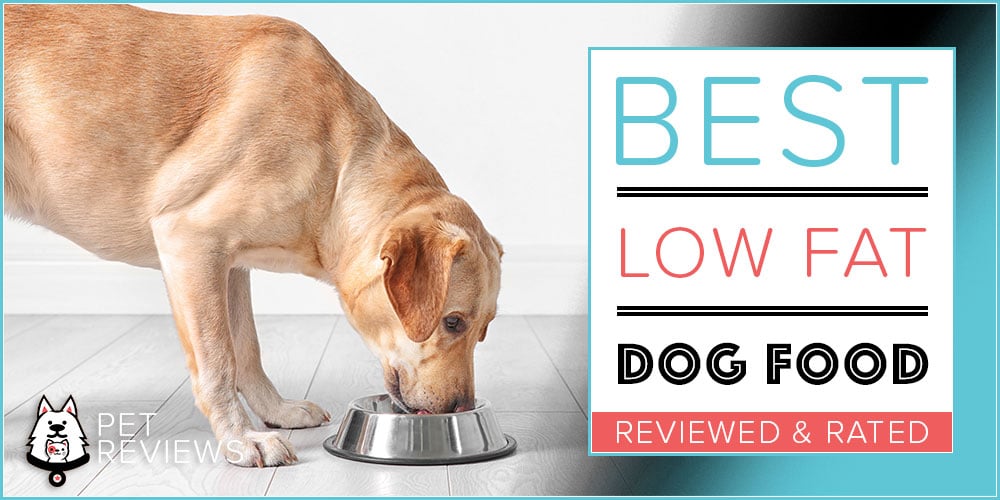

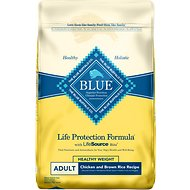

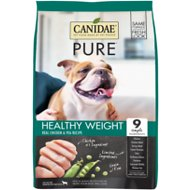
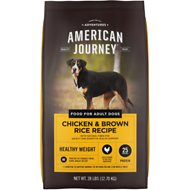


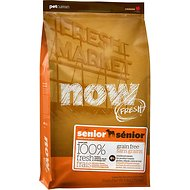
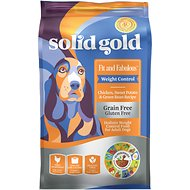
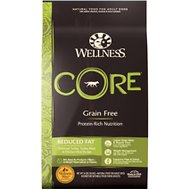
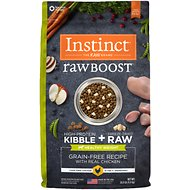
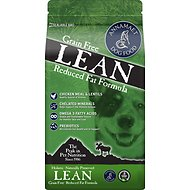
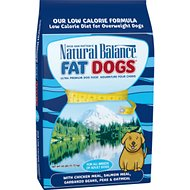
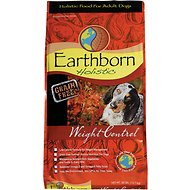
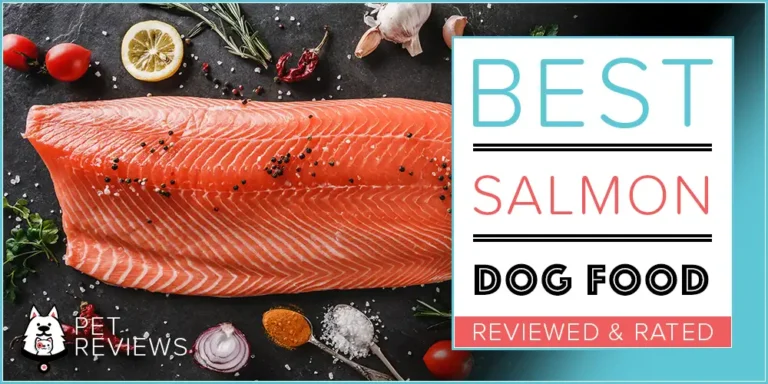
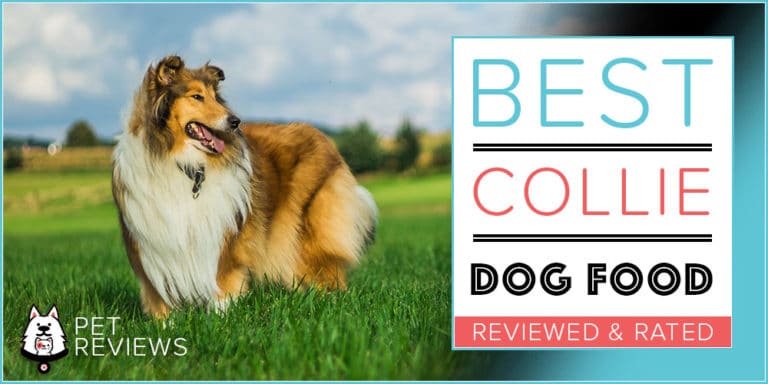
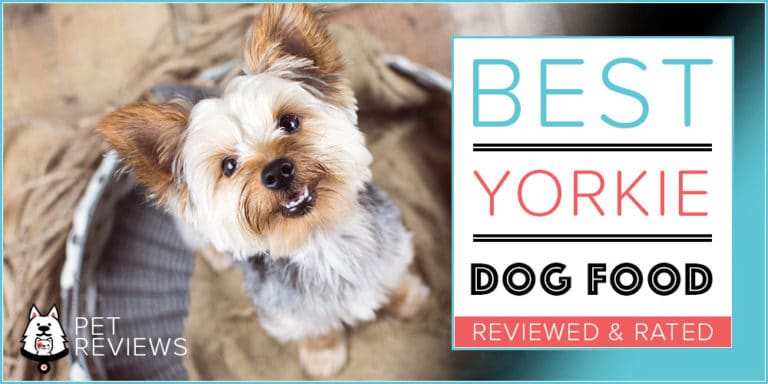
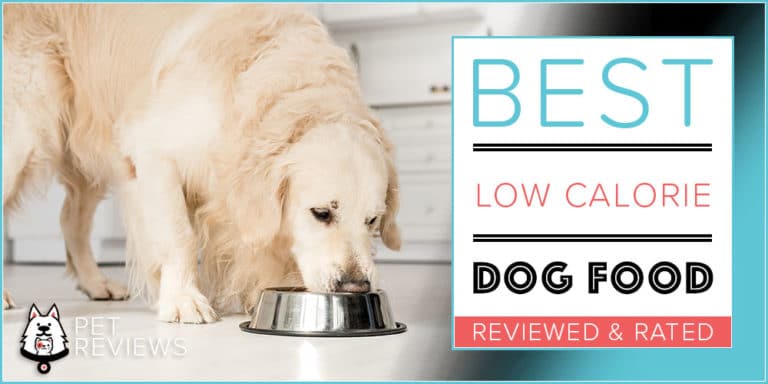
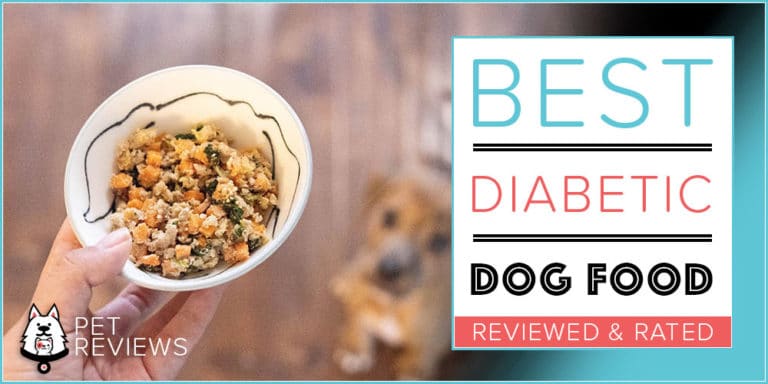
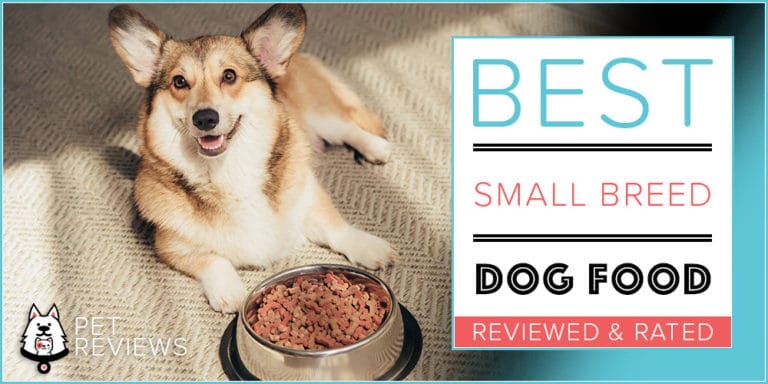
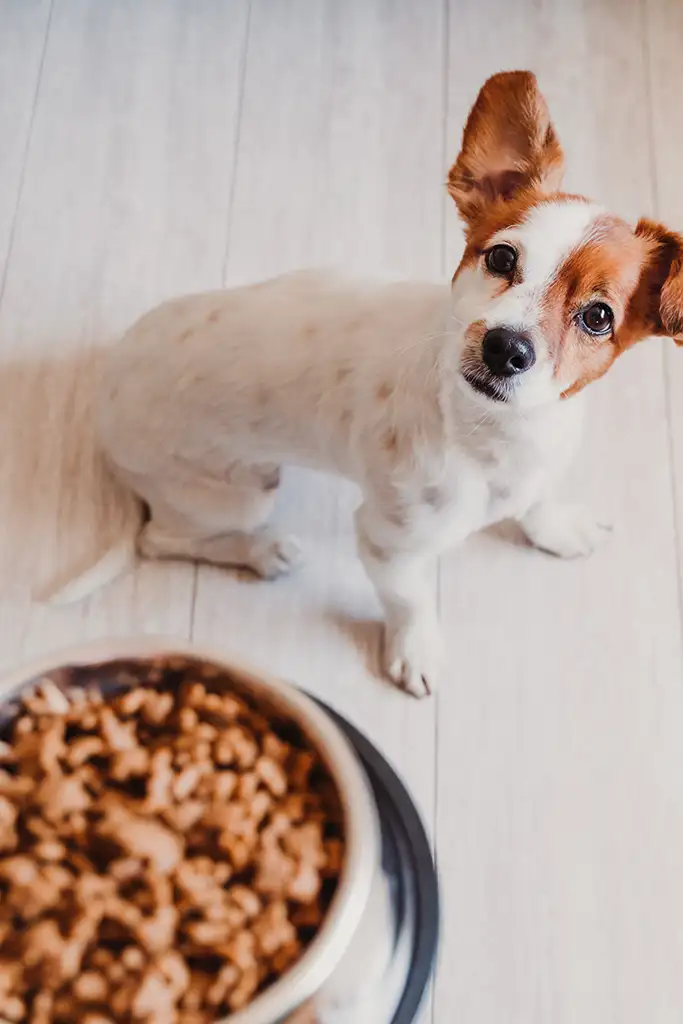
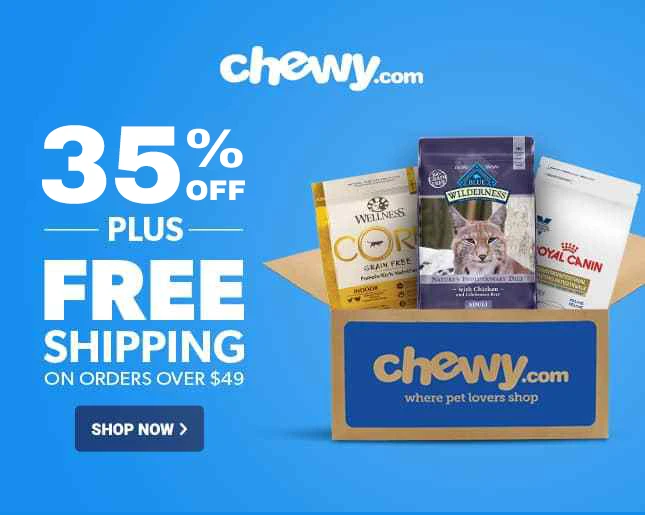
The title says best low fat dog food, dry and canned but I only see dry dog foods listed. What happened to the canned dog foods that should be included in this article?
Great question, Sheree! I think we’re going through some updates right now, so things might have gotten shifted around. If you’re looking for low-fat canned dog food for pancreatitis, you could try Blue Buffalo’s Natural Veterinary Diet GI recipe or Hill’s and Royal Canin have a few options. Another option to consider is a fresh dog food delivery service – these companies can work with you to find your dog’s optimal calorie intake and they send the food right to your house. Good luck!